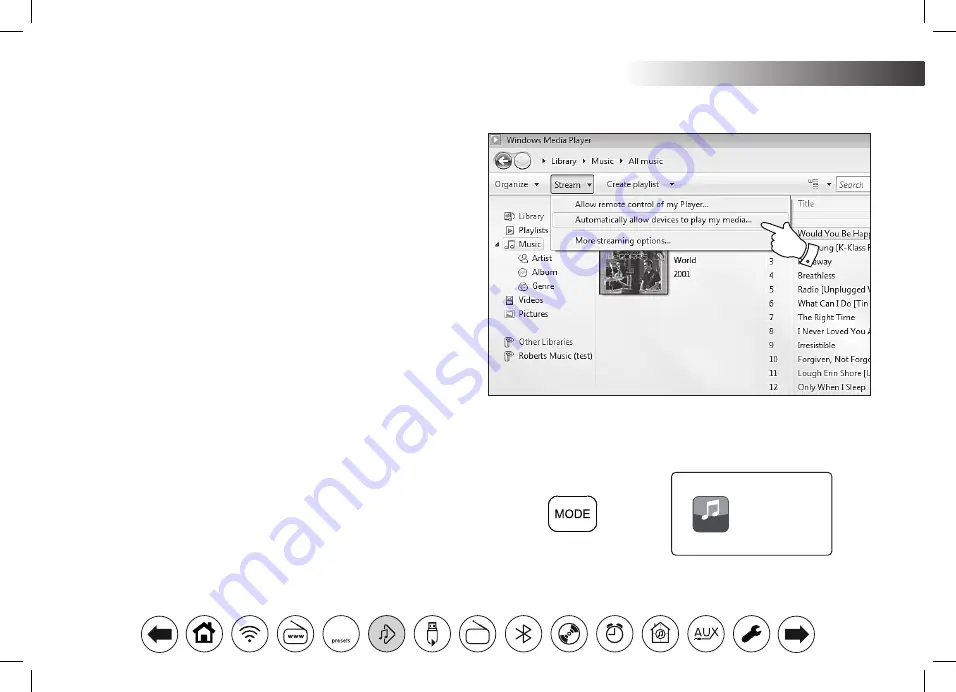
32
Music Player .
Accessing your audio files via a UPnP server
If your computer is running Windows 7, 8, 8.1 or 10, then Windows Media
Player includes a UPnP server which will make your files available to your
audio system. There are other UPnP server solutions available for non-
Windows users and for Windows users who may wish to use an alternative
(see the preceding page).
It is beyond the scope of this instruction book to cover all possible options
for UPnP. We explain the use of Microsoft's Windows Media Player here
since that will be the first choice for the majority of users.
Set up UPnP access with Windows Media Player
1. At the time of writing, Windows 7, 8, 8.1 and 10 all use Windows Media
Player version 12 (referred to here as WMP 12), and the configuration
is similar in each case. WMP 12 can create a library from all the media
files available to it on your PC. To add new media files to the library,
select
'Library'
, then
'Music'
, then
'All music'
or
'Artist'
,
'Album'
etc.
This will show you the current library contents. You may then simply
drag and drop files from other locations into the library. Alternatively,
with media files or folders on the screen, you may right-click on the
file or folder and select
'Include in library'
and then select
'Music'
. In
this way you can quickly add additional content to your music library.
2. In WMP 12, click on
'Stream'
(see picture at right) and then select
'Automatically allow devices to play my media'
. Then accept the
'Automatically allow all computer and media devices'
option. There
are other options (see overleaf) but this is the simplest if you just wish
to quickly enable media streaming to your audio system.
3. Switch the audio system on and press
Mode
until the
'Music Player'
mode is shown. The main music player menu will then be displayed.
2
Enabling Media Streaming in Windows Media Player 12
Music
player
My Music






























